Abstract
A retrospective study of 51 calves less than two months of age showing signs of abdominal pain or presented because of abdominal distension was carried out to evaluate the relationship between etiological, diagnostic, and prognostic characteristics. We found that the age of the calf differed with the type of lesion present. Calves under eight days of age had a 73% incidence of lesions which required surgical therapy. Atresia of part of the intestinal tract was the most frequently diagnosed problem, In eight-day to two-month-old calves, medical causes of colic were more common; only 26% of cases had lesions that required surgical correction. Gaseous distension of the abomasum and intestine was the most frequent cause of colic in older calves. Other abdominal problems observed in this study included abomasal ulceration and abomasal torsion.
Mortality was more common in calves with surgical problems. Of the 21 calves with surgical problems, 76% died compared with a 20% mortality rate in the 30 calves with medical problems. Because of the high incidence of surgical problems in young calves, mortality was 69% in calves under eight days of age and only 33% in older calves. The chance of recovery decreased with the severity of hypothermia and dehydration. Most calves (75%) which were recumbent at presentation died, whereas only 29% of calves which were alert and able to stand at presentation died. Hematological findings indicative of severe inflammation were poor prognostic signs. Heart rate and the apparent severity of abdominal pain were not useful prognostic indicators.
Keywords: Calves, colic, surgery, medical treatment, mortality, etiology, diagnosis, prognosis
Full text
PDF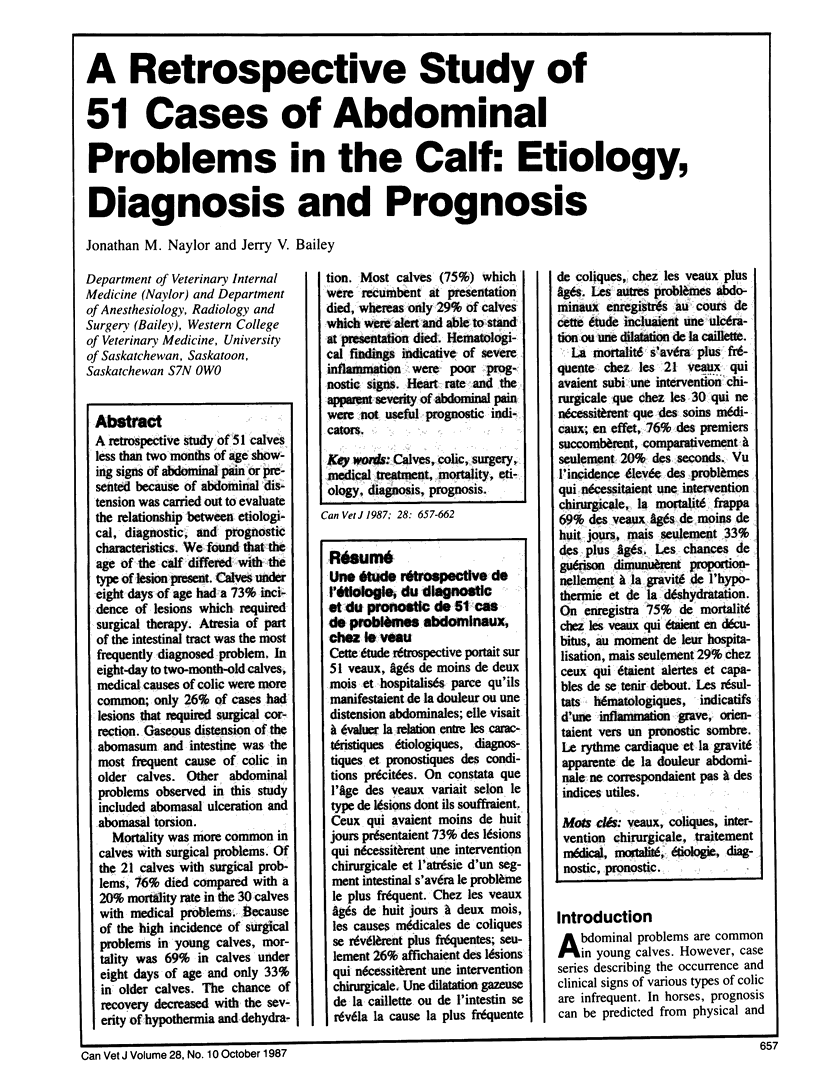
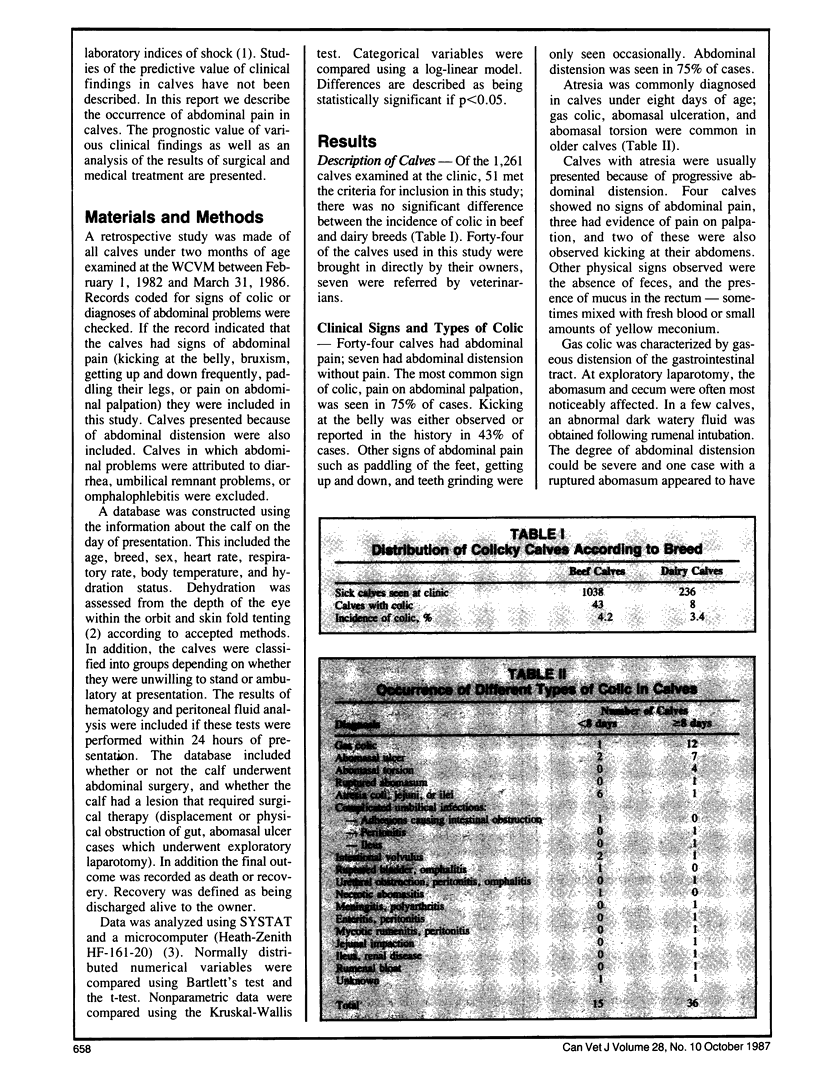
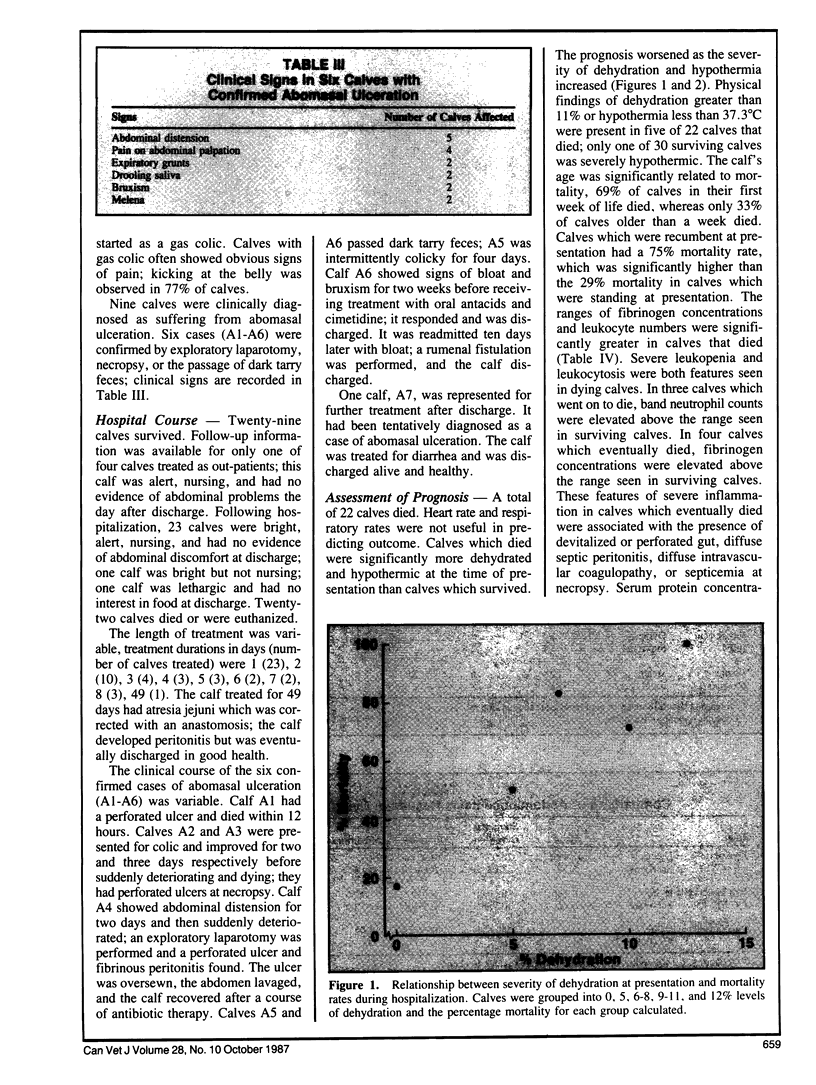
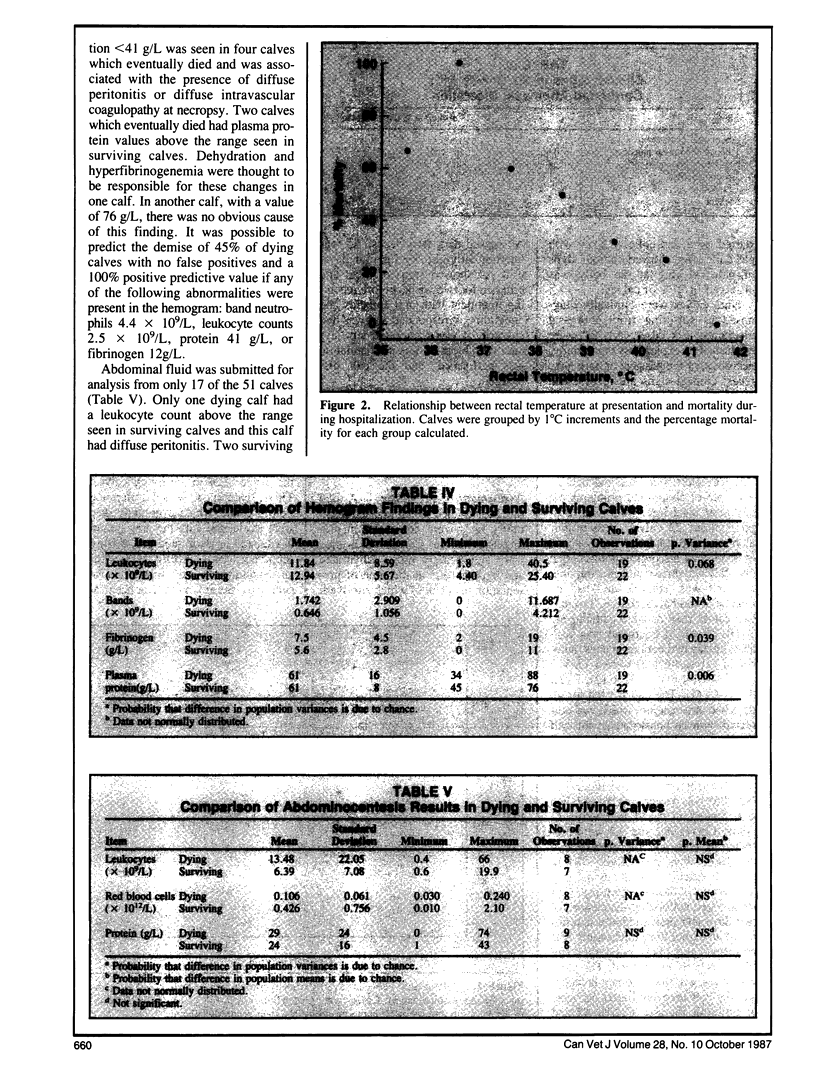
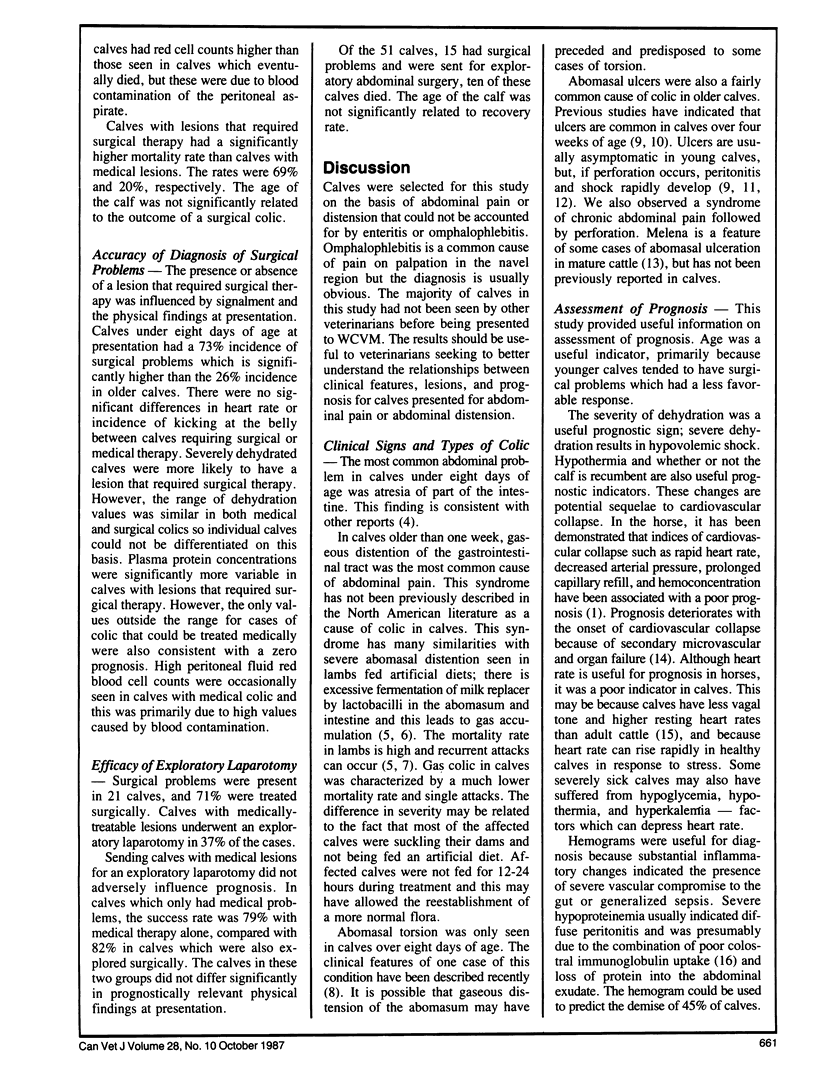
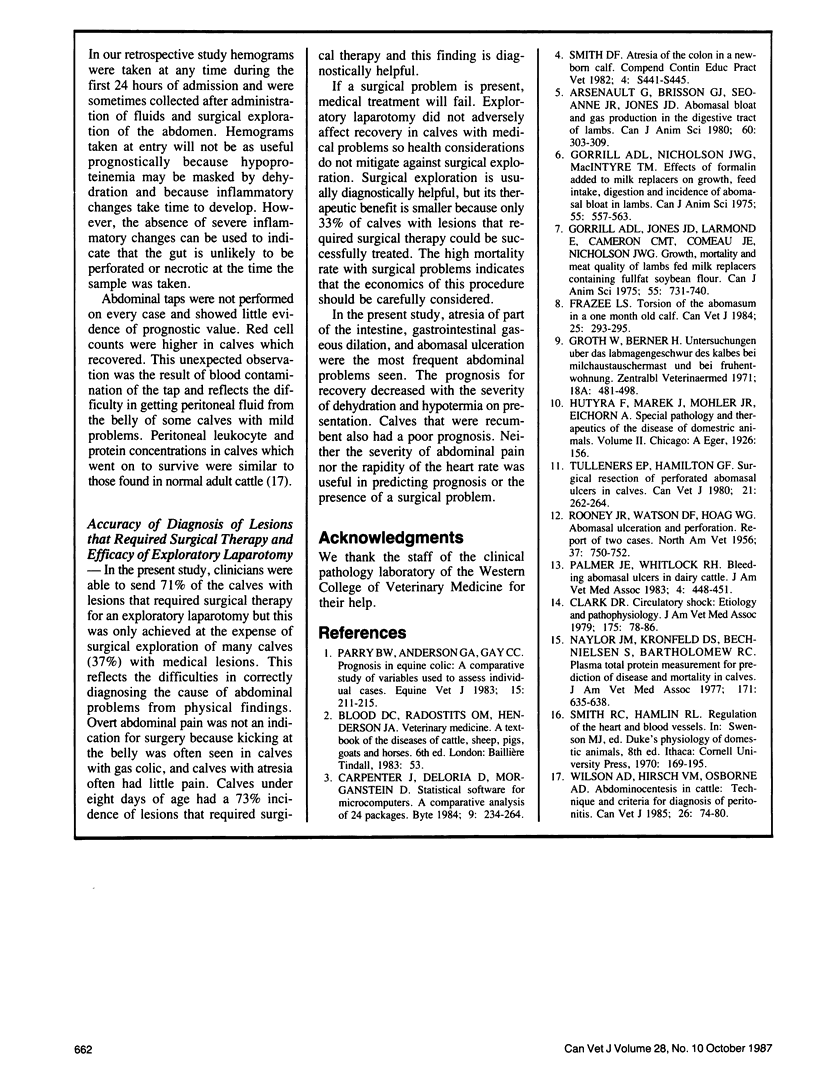
Selected References
These references are in PubMed. This may not be the complete list of references from this article.
- Cameron R. G., Seemayer T. A., Wang N. S., Ahmed M. N., Tabah E. J. Small cell malignant tumors of the thyroid. A light and electron microscopic study. Hum Pathol. 1975 Nov;6(6):731–740. doi: 10.1016/s0046-8177(75)80081-5. [DOI] [PubMed] [Google Scholar]
- Clark D. R. Circulatory shock: etiology and pathophysiology. J Am Vet Med Assoc. 1979 Jul 1;175(1):78–81. [PubMed] [Google Scholar]
- Frazee L. S. Torsion of the abomasum in a one month old calf. Can Vet J. 1984 Jul;25(7):293–295. [PMC free article] [PubMed] [Google Scholar]
- Groth W., Berner H. Untersuchungen über das Labmagengeschwür des Kalbes bei Milchaustauschermast und bei Frühentwöhnung. Zentralbl Veterinarmed A. 1971 Aug;18(6):481–488. [PubMed] [Google Scholar]
- Naylor J. M., Kronfeld D. S., Bech-Nielsen S., Bartholomew R. C. Plasma total protein measurement for prediction of disease and mortality in calves. J Am Vet Med Assoc. 1977 Oct 1;171(7):635–638. [PubMed] [Google Scholar]
- Palmer J. E., Whitlock R. H. Bleeding abomasal ulcers in adult dairy cattle. J Am Vet Med Assoc. 1983 Aug 15;183(4):448–451. [PubMed] [Google Scholar]
- Parry B. W., Anderson G. A., Gay C. C. Prognosis in equine colic: a comparative study of variables used to assess individual cases. Equine Vet J. 1983 Jul;15(3):211–215. doi: 10.1111/j.2042-3306.1983.tb01768.x. [DOI] [PubMed] [Google Scholar]
- Tulleners E. P., Hamilton G. F. Surgical resection of perforated abomasal ulcers in calves. Can Vet J. 1980 Sep;21(9):262–264. [PMC free article] [PubMed] [Google Scholar]
- Wilson A. D., Hirsch V. M., Osborne A. D. Abdominocentesis in cattle: technique and criteria for diagnosis of peritonitis. Can Vet J. 1985 Feb;26(2):74–80. [PMC free article] [PubMed] [Google Scholar]


